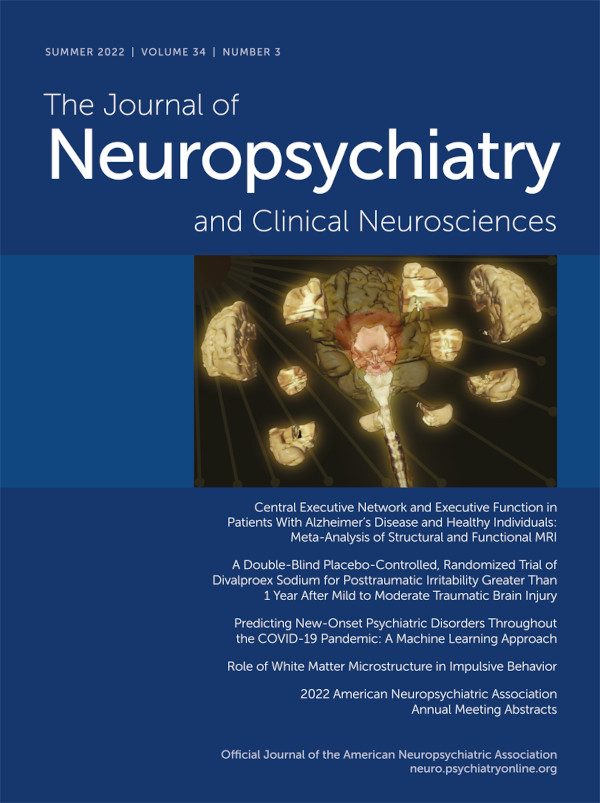Role of White Matter Microstructure in Impulsive Behavior
Abstract
Objective:
Increased impulsivity is a hallmark trait of some neuropsychiatric illnesses, including addiction, traumatic brain injury, and externalizing disorders. The authors hypothesized that altered cerebral white matter microstructure may also underwrite normal individual variability in impulsive behaviors and tested this among healthy individuals.
Methods:
Impulsivity and diffusion tensor imaging (DTI) data were collected from 74 healthy adults (32 women; mean age=36.6 years [SD=13.6]). Impulsivity was evaluated using the Barratt Impulsiveness Scale–11, which provides a total score and scores for three subdomains: attentional, motor, and nonplanning impulsiveness. DTI was processed using the Enhancing Neuro Imaging Genetics Through Meta Analysis-DTI analysis pipeline to measure whole-brain and regional white matter fractional anisotropy (FA) values in 24 tracts.
Results:
Whole-brain total average FA was inversely correlated with motor impulsiveness (r=−0.32, p=0.007) and positively correlated with nonplanning impulsiveness (r=0.29, p=0.02); these correlations were significant after correction for multiple comparisons. Additional significant correlations were observed for motor impulsiveness and regional FA values for the corticospinal tract (r=−0.29, p=0.01) and for nonplanning impulsiveness and regional FA values for the superior fronto-occipital fasciculus (r=0.32, p=0.008).
Conclusions:
These results provide initial evidence that the motor and nonplanning subdomains of impulsive behavior are linked to specific white matter microstructural connectivity, supporting the notion that impulsivity is in part a network-based construct involving white matter microstructural integrity among otherwise healthy populations.



